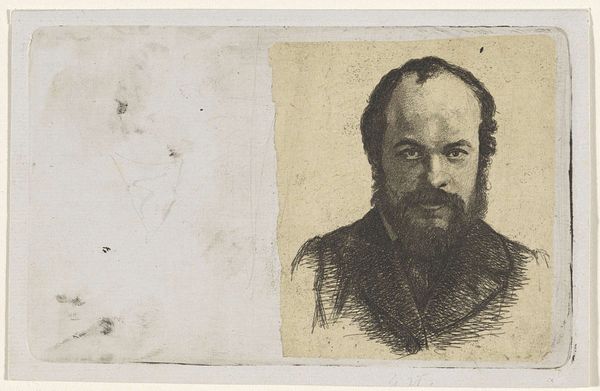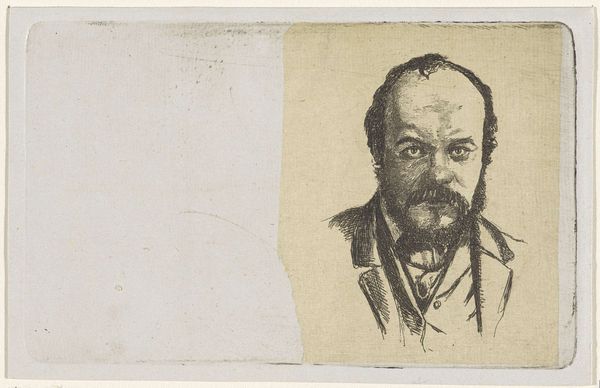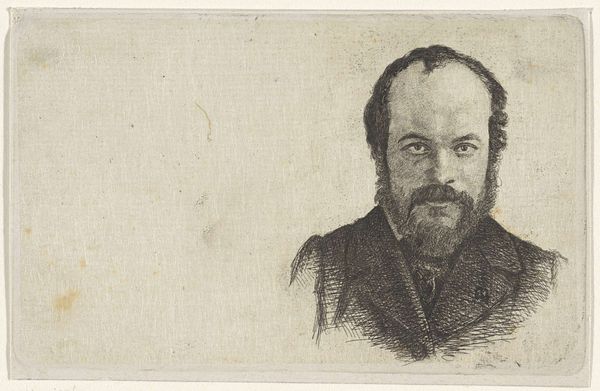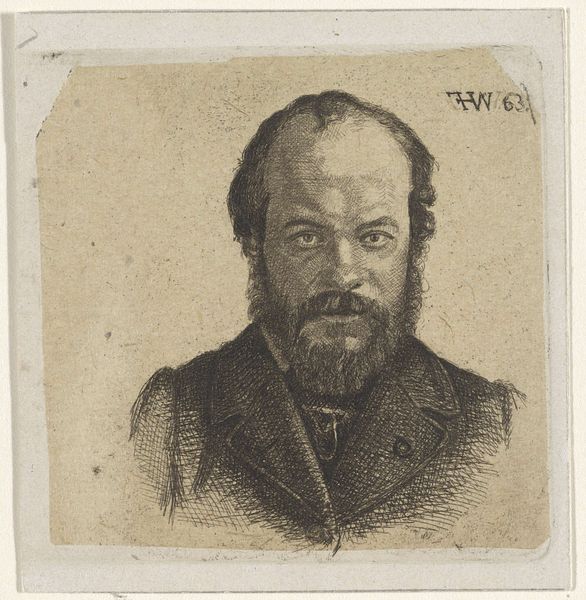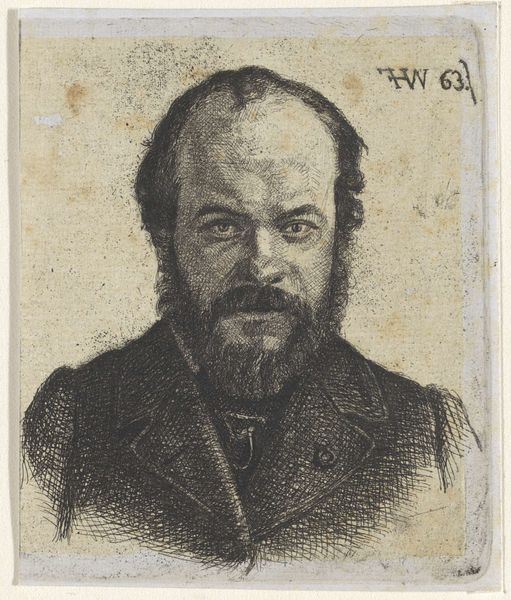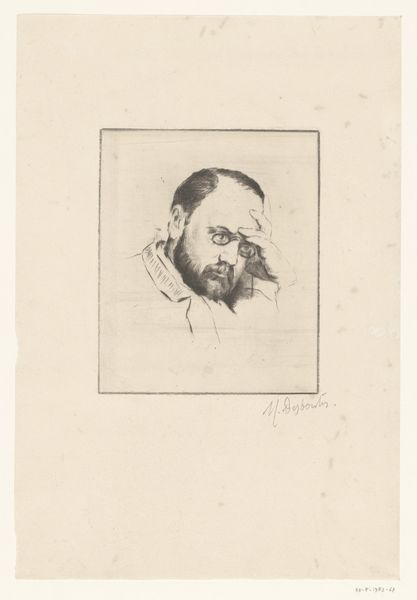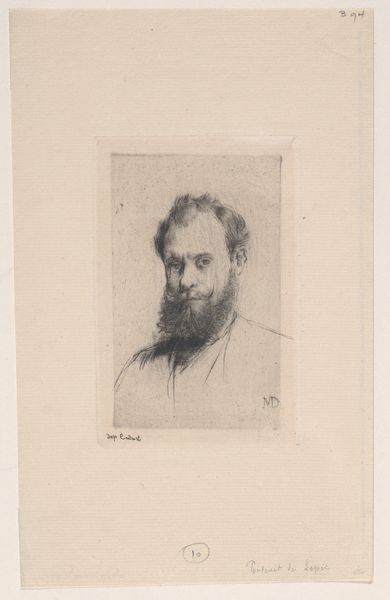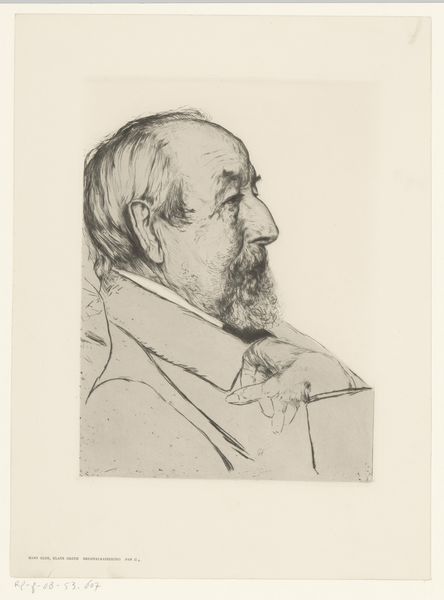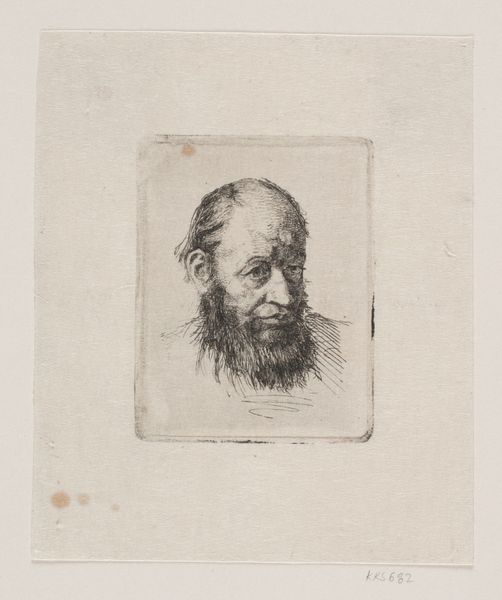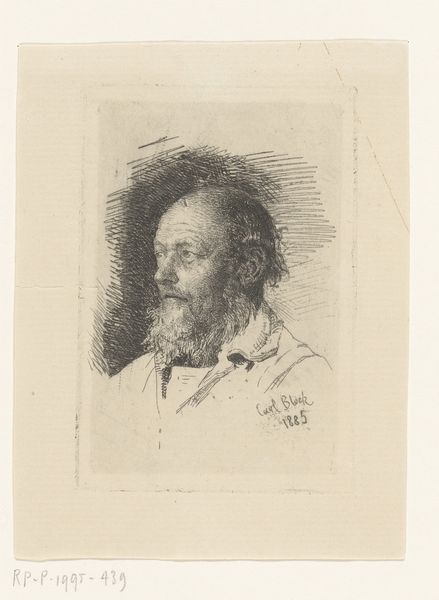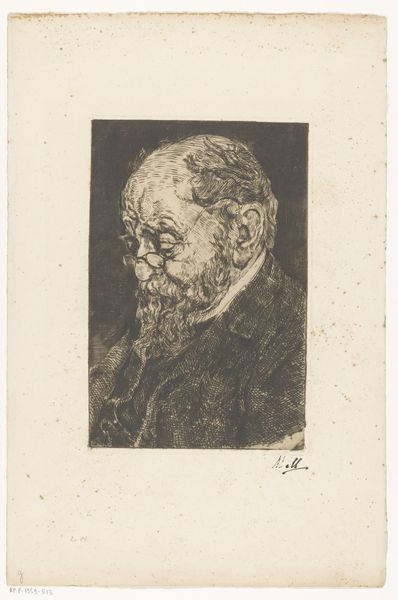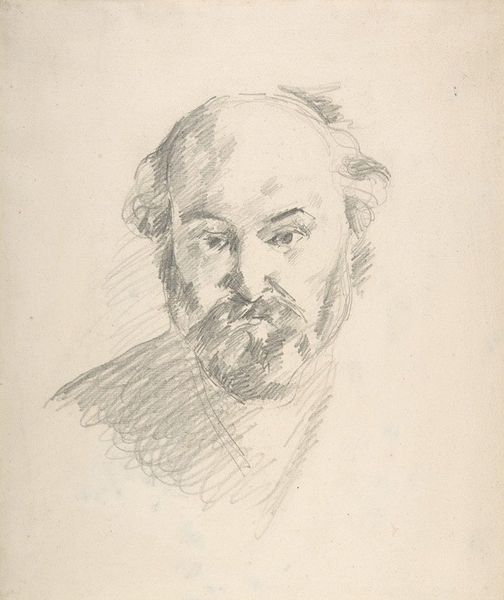
print, etching
#
portrait
#
16_19th-century
# print
#
etching
#
realism
Dimensions: height 88 mm, width 140 mm
Copyright: Rijks Museum: Open Domain
Editor: Here we have Frederik Hendrik Weissenbruch's etching "Portret van Jan Weissenbruch" from 1863, housed in the Rijksmuseum. It's a striking portrait; there's a certain intensity in the gaze that's immediately captivating, though it’s such a small scale. How do you see this work, in relation to art history? Curator: What's immediately compelling is how this work situates itself within the evolving public sphere of art in the 19th century. The etching medium itself speaks to a democratization of image production. Was Weissenbruch, through this accessible print, aiming for broader recognition within artistic circles for Jan? Think about the function of portraiture in establishing artistic identity. Editor: So, it's not just about capturing a likeness, but about strategic visibility? I guess a painting would be too much. Curator: Precisely. And consider realism as a movement. Was it enough for artists to accurately represent their subject? Weissenbruch makes his subject an everyman and perhaps signals solidarity. It is less about idealizing and more about documenting. Do you see any visual cues reinforcing that notion? Editor: Well, his hair’s a little messy. It certainly looks less staged, and a lot more, approachable. I also didn't realize printmaking could be a kind of artistic statement. Curator: Yes! The very act of choosing printmaking, at a time when painting held such hierarchical dominance within the art world, becomes a significant social statement, reaching far beyond just depicting Jan’s appearance. How do you view the composition itself within this context? The seemingly cropped side leaves negative space for interpretation. Editor: The cropping does create a sense of incompleteness, or potential. It suggests he is active, caught mid-thought almost, which enhances that idea of "everyman," you mentioned. This artwork is now far more engaging. Curator: Indeed, considering it as a cultural artifact deepens our understanding. Editor: Agreed! Thanks to this discussion, I'll view other portraiture and print media from a totally different, critical angle.
Comments
No comments
Be the first to comment and join the conversation on the ultimate creative platform.
